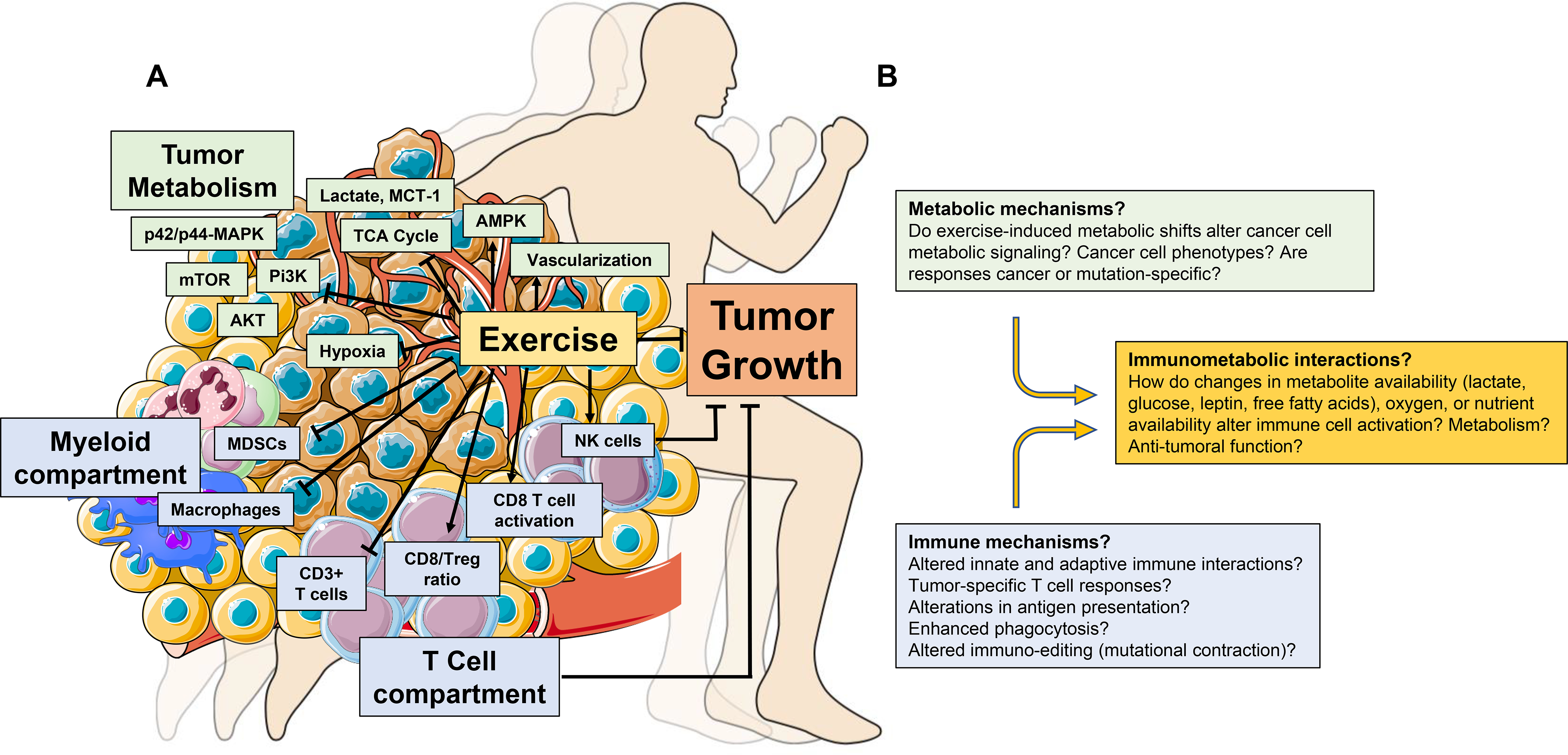Figure 2:

Exercise-induced regulation of immune and metabolic function in the TME. (A) Exercise alters the immune composition of the TME (blue boxes), decreasing the proportion of innate immune cell populations (macrophages and myeloid derived suppressor cells (MDSCs) and increasing CD3+ T cells and NK cells. Furthermore, the ratio of CD8+ T cells versus regulatory T cells (Treg), as well as the activation of CD8+ T cells (CD69+) is increased with exercise. Exercise also alters TME metabolism (green boxes). Decreased hypoxia and increased vascularization occur alongside decreased levels of lactate and MCT1, and the relative concentration of metabolites that comprise the TCA cycle are also reduced. Increased intratumoural AMPK activity and reduced AKT, mTOR, Pi3K, and p42/p44-MAPK have all been reported with exercise. T cells and NK cells are required for exercise-induced tumour inhibition in mouse models of cancer. (B) Proposed immunometabolic mechanisms that may drive exercise-induced inhibition or delay of tumourigenesis. NK: natural killer; MCT-1: Monocarboxylate transporter 1; TCA: tricarboxylic acid cycle; AMPK: adenosine monophosphate kinase; mTOR: mammalian target of rapamycin; Pi3K; Phosphoinositide 3-kinase; MAPK: mitogen-activated protein kinase.
